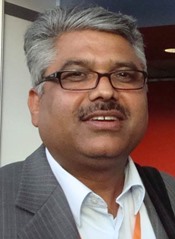Program Information
3D Printed Patient-Specific Surface Mould Applicators for Brachytherapy Treatment of Superficial Lesions
I Cumming1 , C P Joshi2*, A Lasso1 , A Rankin1 , C Falkson2 , L John Schreiner2 , G Fichtinger1 , (1) Laboratory for Percutaneous Surgery, School of Computing, Queen's University, Kingston, Ontario, Canada (2) CCSEO, Kingston General Hospital and Department of Oncology, Queen's University, Kingston, Ontario,Canada
Presentations
SU-E-T-4 Sunday 3:00PM - 6:00PM Room: Exhibit HallPurpose:
Evaluate the feasibility of constructing 3D-printed patient-specific surface mould applicators for HDR brachytherapy treatment of superficial lesions.
Methods:
We propose using computer-aided design software to create 3D printed surface mould applicators for brachytherapy. A mould generation module was developed in the open-source 3D Slicer (www.slicer.org) medical image analysis platform. The system extracts the skin surface from CT images, and generates smooth catheter paths over the region of interest based on user-defined start and end points at a specified stand-off distance from the skin surface. The catheter paths are radially extended to create catheter channels that are sufficiently wide to ensure smooth insertion of catheters for a safe source travel. An outer mould surface is generated to encompass the channels. The mould is also equipped with fiducial markers to ensure its reproducible placement.
A surface mould applicator with eight parallel catheter channels of 4mm diameters was fabricated for the nose region of a head phantom; flexible plastic catheters of 2mm diameter were threaded through these channels maintaining 10mm catheter separations and a 5mm stand-off distance from the skin surface. The apparatus yielded 3mm thickness of mould material between channels and the skin. The mould design was exported as a stereolithography file to a Dimension SST1200es 3D printer and printed using ABS Plus plastic material.
Results:
The applicator closely matched its design and was found to be sufficiently rigid without deformation during repeated application on the head phantom. Catheters were easily threaded into channels carved along catheter paths. Further tests are required to evaluate feasibility of channel diameters smaller than 4mm.
Conclusion:
Construction of 3D-printed mould applicators show promise for use in patient specific brachytherapy of superficial lesions. Further evaluation of 3D printing techniques and materials is required for constructing sufficiently thin, rigid and durable surface moulds suitable for clinical deployment.
Contact Email:


